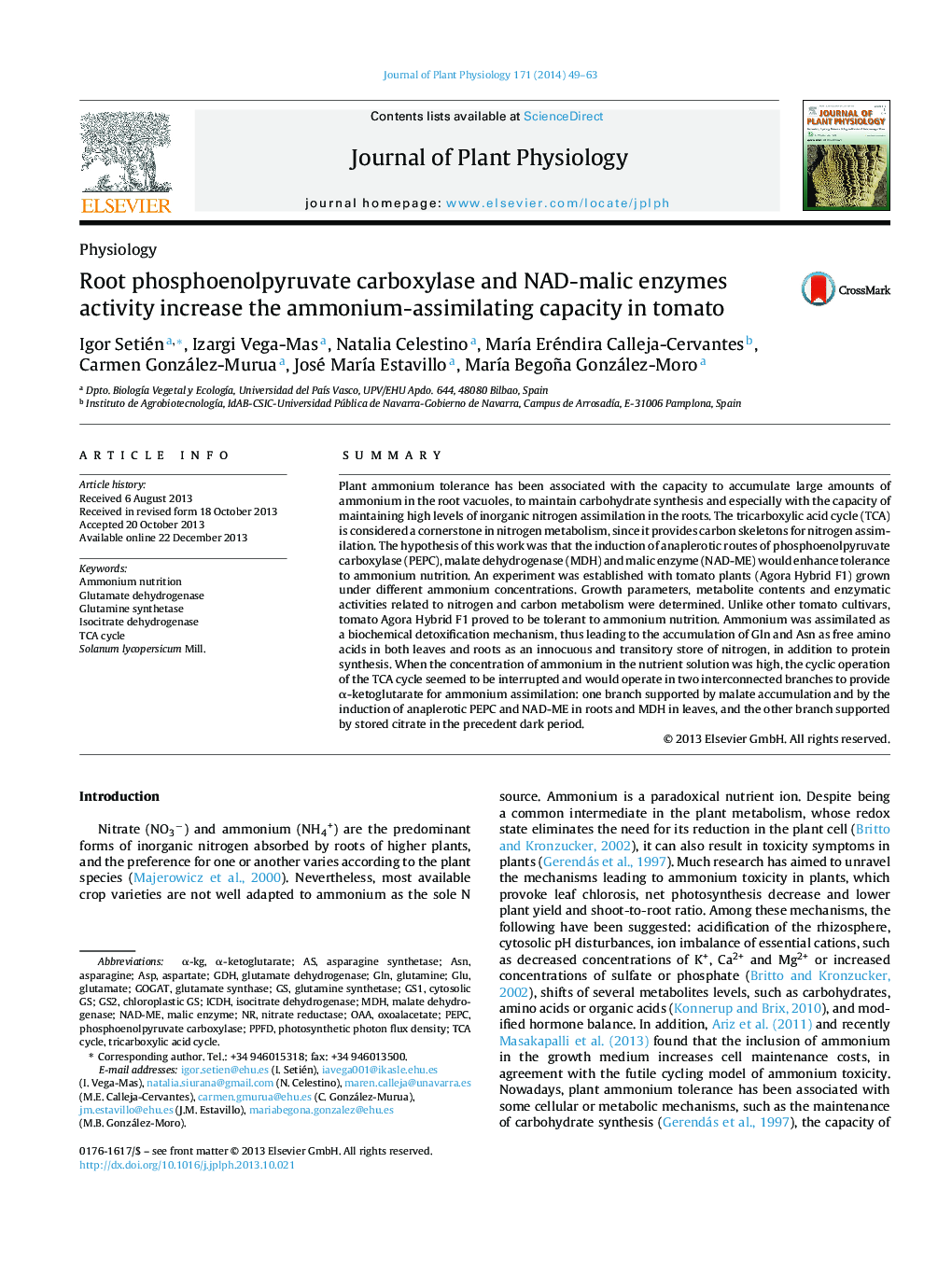| کد مقاله | کد نشریه | سال انتشار | مقاله انگلیسی | نسخه تمام متن |
|---|---|---|---|---|
| 10876890 | 1075782 | 2014 | 15 صفحه PDF | دانلود رایگان |
عنوان انگلیسی مقاله ISI
Root phosphoenolpyruvate carboxylase and NAD-malic enzymes activity increase the ammonium-assimilating capacity in tomato
دانلود مقاله + سفارش ترجمه
دانلود مقاله ISI انگلیسی
رایگان برای ایرانیان
کلمات کلیدی
GLNNAD-MEGS1GS2ICDHGOGATOAAASNα-KGMDHGDHASPα-ketoglutarate - α-کتوگلووتراتAsparagine - آسپاراژینasparagine synthetase - آسپاراژین سنتتازaspartate - آسپارتاتmalic enzyme - آنزیم مالیکIsocitrate dehydrogenase - ایزوسیترات دهیدروژنازmalate dehydrogenase - ملات دهیدروژنازnitrate reductase - نیترات ردوکتازGlu - گلوglutamate - گلوتاماتglutamate dehydrogenase - گلوتامات دهیدروژنازglutamate synthase - گلوتامات سنتازglutamine - گلوتامینGlutamine synthetase - گلوتامین سنتتاز
موضوعات مرتبط
علوم زیستی و بیوفناوری
علوم کشاورزی و بیولوژیک
علوم زراعت و اصلاح نباتات
پیش نمایش صفحه اول مقاله

چکیده انگلیسی
Plant ammonium tolerance has been associated with the capacity to accumulate large amounts of ammonium in the root vacuoles, to maintain carbohydrate synthesis and especially with the capacity of maintaining high levels of inorganic nitrogen assimilation in the roots. The tricarboxylic acid cycle (TCA) is considered a cornerstone in nitrogen metabolism, since it provides carbon skeletons for nitrogen assimilation. The hypothesis of this work was that the induction of anaplerotic routes of phosphoenolpyruvate carboxylase (PEPC), malate dehydrogenase (MDH) and malic enzyme (NAD-ME) would enhance tolerance to ammonium nutrition. An experiment was established with tomato plants (Agora Hybrid F1) grown under different ammonium concentrations. Growth parameters, metabolite contents and enzymatic activities related to nitrogen and carbon metabolism were determined. Unlike other tomato cultivars, tomato Agora Hybrid F1 proved to be tolerant to ammonium nutrition. Ammonium was assimilated as a biochemical detoxification mechanism, thus leading to the accumulation of Gln and Asn as free amino acids in both leaves and roots as an innocuous and transitory store of nitrogen, in addition to protein synthesis. When the concentration of ammonium in the nutrient solution was high, the cyclic operation of the TCA cycle seemed to be interrupted and would operate in two interconnected branches to provide α-ketoglutarate for ammonium assimilation: one branch supported by malate accumulation and by the induction of anaplerotic PEPC and NAD-ME in roots and MDH in leaves, and the other branch supported by stored citrate in the precedent dark period.
ناشر
Database: Elsevier - ScienceDirect (ساینس دایرکت)
Journal: Journal of Plant Physiology - Volume 171, Issue 5, 1 March 2014, Pages 49-63
Journal: Journal of Plant Physiology - Volume 171, Issue 5, 1 March 2014, Pages 49-63
نویسندگان
Igor Setién, Izargi Vega-Mas, Natalia Celestino, MarÃa Eréndira Calleja-Cervantes, Carmen González-Murua, José MarÃa Estavillo, MarÃa Begoña González-Moro,